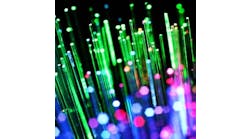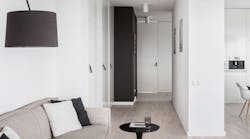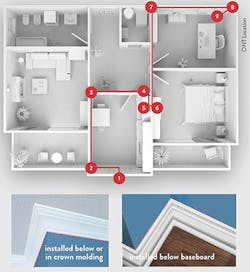Latest from FTTx/Optical Networks
Fiber-to-the-Home (FTTH) investment in North America will double in the next 5 years compared to the previous 5, according to RVA, driven by unrelenting bandwidth demand favoring fiber over other technologies.
Network providers like AT&T are making a greater commitment to FTTH deployments. AT&T said it will bring fiber Internet to 2.5 million more home and business customers by the end of this year, and 15 million more in the next 4 years. They intend to do this across more than 90 metro areas. This would raise AT&T’s fiber deployment to about 30 million homes and businesses.
TDS is spending $220 million to expand its fiber to more addresses. By 2024, the company plans to have 625,000 total fiber services addresses, which will be more than 50% of its total coverage area.
In addition to homes, service providers are bringing fiber to and into the living unit in multiple dwelling units (MDUs) and into commercial and institutional buildings.
Building types include duplexes, garden style, low rise (less than 10 floors), mid-rise (10 to 15 floors), high rise (16 to 40 floors), and skyscrapers (40 floors and higher). However, while structures vary, building owners, residents, and service providers inevitably have common demands: quick service turn-up, and the fast, non-disruptive installation of solutions that blend into the existing decor.
So, given these variables, how can providers accomplish this in buildings that can vary widely in design, materials, and available pathways?
Originally, FTTH deployments used an outdoor hardened Optical Network Terminal (ONT), placed on the side of a home, and used existing in-home copper cabling to connect the ONT to the Residential Gateway (RG) inside the living unit or office.
Today most deployments use lower-cost ONTs placed inside each living unit or office. Since service providers want to deploy ONTs deep within the home with co-located WiFi to improve in home wireless coverage, they are challenged to place fiber inside existing residences or buildings:
1. There may be no existing fiber ducts or pathways to the ONT location.
2. Installing new ducts or cutting and patching walls can be very expensive and disruptive.
3. Surface mounting conventional fiber cables can be unsightly, and result in optical signal loss when the cables are bent around the many sharp corners on the pathway to the ONT.
4. Wire molding or tape systems that protect and hide the fiber are typically cost-prohibitive, visible, and very slow to install.
Solving The Challenge Of Customer Acceptance
The first approach to bring fiber deep inside used 4.8 mm cables with fiber rated to 7.5 mm bend radius. Unfortunately, these cables caused unacceptable signal loss when stapled around corners, so fiber rated to 5 mm bend radius was developed, which improved but did not eliminate bend loss concerns. This led to a 2.5 mm bend radius fiber now offered in both 4.8 and 3 mm diameter cables.
The benefit of the 2.5 mm radius fiber recently has doubled in a way: New XGS-PON (10 Gigabit) systems use the 1577 nm wavelength that will experience double the signal loss around bends compared to the 1490 nm wavelength used for G-PON systems!
But let’s be frank. Today, customers’ demand for high bandwidth speeds and low latency is significant and growing. That said, some subscribers won’t accept the appearance of 4.8 mm or even 3 mm OD cables along their baseboards or moldings.
What’s more, fiber pathways inside living units, offices, and buildings, can be full of corners. In fact, it is not unusual to see 20 corners in a large deployment. For example, there may be 12 corners over only 10 feet (3 meters). Hallways may have even more corners. Talk about challenging!
These corners require the very lowest bend loss performance, down to 2.5 mm bend radius. While it is possible to use bend management devices to navigate corners at larger bend radii, such devices slow installation time and increase visibility.
In response, a solution was created several years ago using a 0.9 mm outside diameter (OD) fiber where the fiber is adhered in the creases between walls and ceilings or between moldings and walls. This process uses a few simple tools and a straight-forward approach that allows the 2.5 mm bend radius fiber to handle the corners encountered in real deployments, and be virtually invisible to the subscriber. More recently a 0.6 mm version was created to further reduce size and visibility of factory-terminated connection modules and of the installed fiber.
This approach has expanded to include the entire drop cable system. Today, there is a faster, easier, cost-effective, and virtually invisible, fiber deployment strategy for bringing fiber to and into buildings, homes, and offices. It enables a single fiber drop cable assembly to connect from the fiber distribution terminal which is placed on a pole, strand, or pedestal. It easily connects all the way into the home to the indoor ONT. (See Figure 1.)
This newer, 2-pronged system uses a 4.8 mm or 3.0 mm OD cable with a 900-micron white buffered fiber capable of 2.5 mm bend radius inside, for the option to reach the ONT invisibly when needed. It can save approximately 20 minutes per home connected by eliminating the need for a network interface device (NID) mounted on the home. It also delivers the potential for lower loss by eliminating the need for a connection or splice inside the NID. (See Figure 2.)
This system is one option to address the interior challenges fiber installers face in living units. Still, each application is unique. So, as you seek ways to deliver FTTH via a cost-effective system, be sure to ask these 4 questions about the solution you are evaluating:
1. Will subscribers accept it?
2. Will it support reliable service even with the tight bending required?
3. Can it enable placement of the ONT/WiFi for best indoor coverage?
4. Is it easy to install and cost-effective?
Today’s customers demand more from their network provider in terms of bandwidth, speed, and aesthetically pleasing fiber solutions. Thankfully, there are newer strategies that enable fast, easy, and accepted, fiber deployments to and into MDUs, homes, and offices.
Resources and Notes
https://about.att.com/story/2021/att_analyst_day.html
https://www.fiercetelecom.com/telecom/tds-telecom-says-it-will-double-its-fiber-footprint-2021
For more information, please email [email protected], call 770.798.2432, or visit https://www.ofsoptics.com/. Follow OFS on Twitter: https://twitter.com/ofs_optics.
Like this Article?
Subscribe to ISE magazine and start receiving your FREE monthly copy today!







